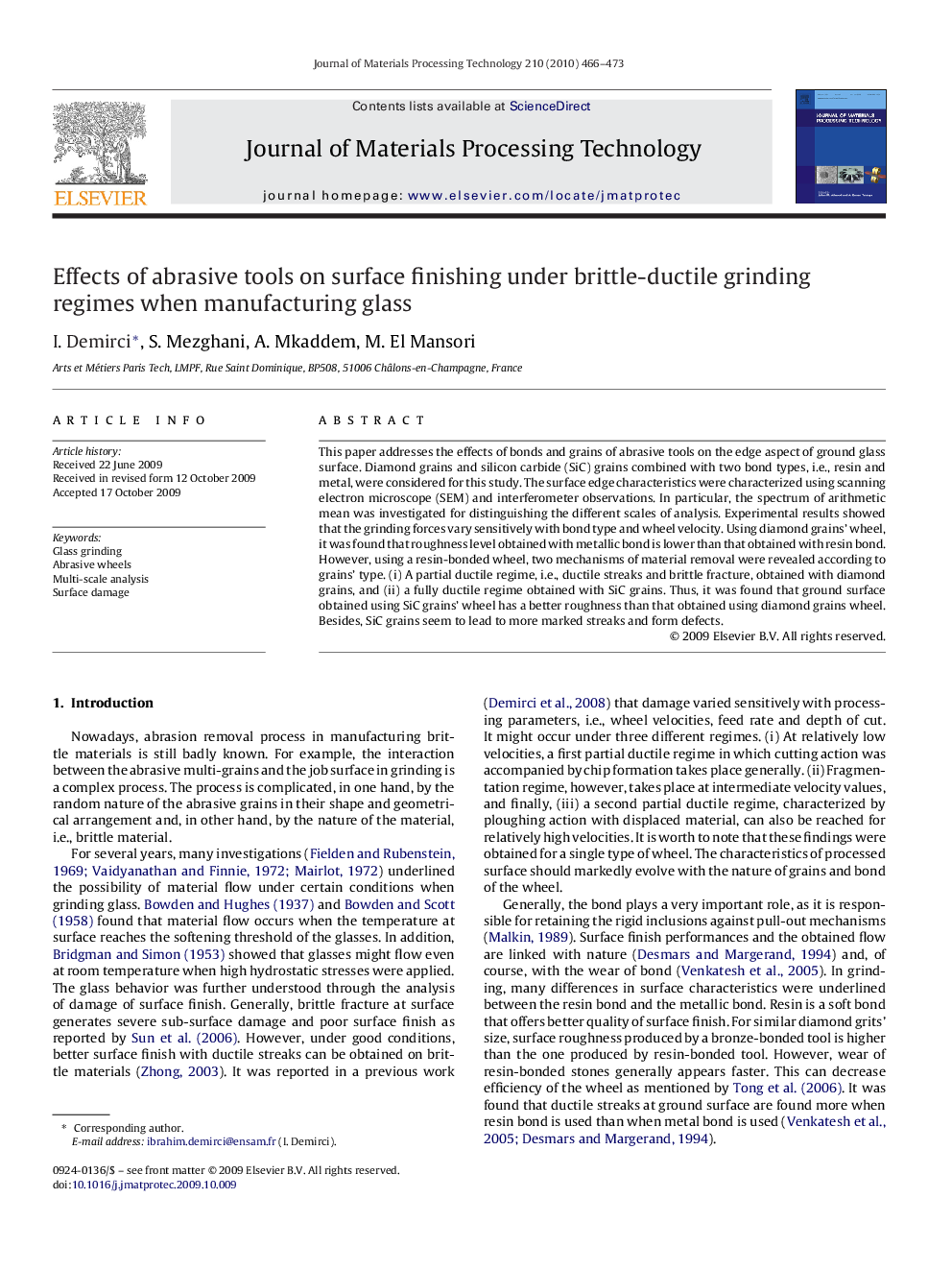| Article ID | Journal | Published Year | Pages | File Type |
|---|---|---|---|---|
| 795036 | Journal of Materials Processing Technology | 2010 | 8 Pages |
This paper addresses the effects of bonds and grains of abrasive tools on the edge aspect of ground glass surface. Diamond grains and silicon carbide (SiC) grains combined with two bond types, i.e., resin and metal, were considered for this study. The surface edge characteristics were characterized using scanning electron microscope (SEM) and interferometer observations. In particular, the spectrum of arithmetic mean was investigated for distinguishing the different scales of analysis. Experimental results showed that the grinding forces vary sensitively with bond type and wheel velocity. Using diamond grains’ wheel, it was found that roughness level obtained with metallic bond is lower than that obtained with resin bond. However, using a resin-bonded wheel, two mechanisms of material removal were revealed according to grains’ type. (i) A partial ductile regime, i.e., ductile streaks and brittle fracture, obtained with diamond grains, and (ii) a fully ductile regime obtained with SiC grains. Thus, it was found that ground surface obtained using SiC grains’ wheel has a better roughness than that obtained using diamond grains wheel. Besides, SiC grains seem to lead to more marked streaks and form defects.
